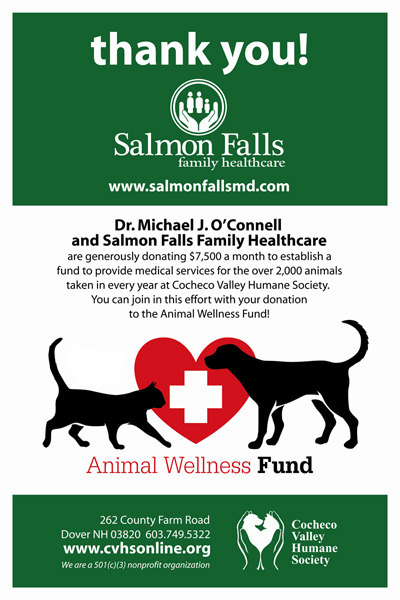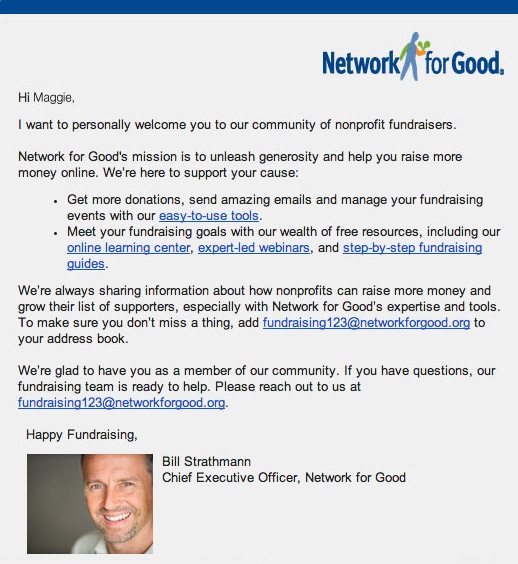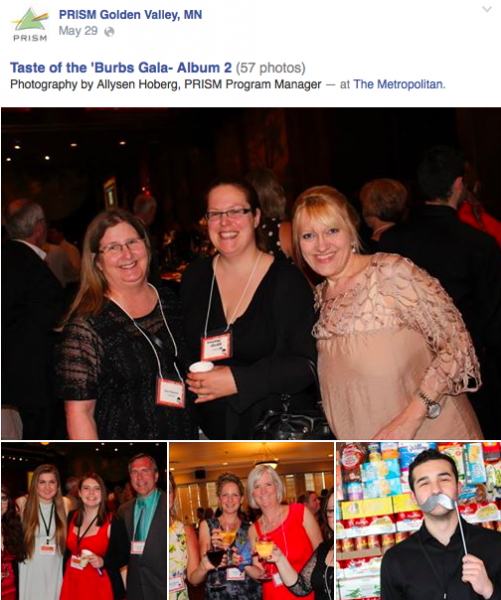
A Fundamental Guide to Email and Social Media Marketing for Non-Profits
As a non-profit, you work hard to offer unmatched services, promote a cause and improve your community. Like most non-profits, you’re probably doing all of this with limited staff and a tight budget. Fortunately, email and social media marketing are great ways to spread the word about your organization.
“Email and social media marketing is easy and inexpensive,” says Jill Bastian, our Community Education and Training manager. “It can bring much needed attention to a non-profit. The more attention you can get, the more donations, volunteers or supporters you can bring in.”
To help your non-profit thrive, we’ve put together the ultimate email and social media marketing guide. We’ll show you how to use these two marketing vehicles to maximize your reach, boost donations, recruit volunteers and increase awareness.
For starters, let’s talk about the five biggest benefits of email and social media marketing.
1. Solid return on investment
To reiterate, email and social media marketing is an affordable marketing option, which is especially attractive to non-profits working with donations and limited grant money. Did you know we have a generous non-profit discount?
When it comes to email marketing, for every $1 you spend, you get a return of about $40, Bastian says. Social media marketing is free. Of course, there is a time commitment and you can choose to pay for some social advertising; other than that, there’s no cost.
2. Boost public awareness
It’s not always easy to let the public know what you’re up to, but email and social media can help. If you work to grow your email list and social media following, you’ll be able to reach your audience in real time. Awareness is a big piece of any marketing puzzle, and email and social media marketing are easy tools to use from the comfort of your office.
3. Increase involvement
At some point, every non-profit needs a helping hand. With email and social media marketing your non-profit can instantly engage with an audience of potential helpers. Whether you want to recruit volunteers or collect donations, an email and a tweet can go a long way to increase involvement in your organization.
4. Stay in front of supporters
By sending emails and being social, you can stay in front of your supporters. You’re competing for support, so it’s important to keep your non-profit’s name and mission out there for the public to see and hear. With continued communication you’re more likely to see supporters participate throughout the year.
5. Save time
Your time is valuable. That’s why when you use VerticalResponse, you’ll find it easy to create emails and post to your social media accounts. You can create an email and share that same content on your social sites. Plus, you can link your social media accounts to every email that you send through VerticalResponse.
Now, let’s talk about the kinds of emails and social media messages you should send. We’ll start with the top five emails your non-profit should send and give you tips to make each email effective. Keep in mind all of the email content that you send can also be shared on social media.
1. Newsletter
You can create a newsletter in a snap. A newsletter keeps your supporters in the loop. Talk about upcoming events, show pictures of recent projects, share the story of someone your organization has helped or highlight a volunteer of the month. The possibilities are endless. Here’s an example:
Tips:
- Like the example above, your newsletter should offer a variety of information.
- Your newsletter should include images with captions to break up the content.
2. Invitations
Inviting people to your upcoming event couldn’t be easier through email. You can create a fun and sophisticated invitation to boost attendance at your next fundraiser. Check out the example below.
Tips:
- Include all of the necessary details such as date, location and events offered. And get someone else to do a quick proof, sending the wrong date for your event will cause a lot headaches.
- You should also include links to your social media accounts on the invitation.
3. Incentive email
A lot of businesses send discount codes as an incentive to buy, but you can get a little creative and offer incentives like free t-shirts to the first 15 volunteers who sign up for an event. Think of affordable and easy incentives to get people to participate like the animal shelter did in the example below.
Tips:
- Include the incentive in your subject line.
- Get to the point. Tell recipients exactly what the incentive is and how it works.
4. Thank you email
You can create a professional thank you card and send it to your supporters, volunteers and donors. It’s important to show your appreciation, and an email is a quick and efficient way to do that. When a donor came through with a big donation for an animal shelter, the non-profit sent the email below.
Tips:
- Highlight the reason for your gratitude.
- Include links to the donor’s website or social media accounts as a way to promote them; it may boost their site traffic.
- Include a call to action so others can donate too.
5. Welcome email
When someone new comes along, welcome him or her to the group with a nice email. This email makes a good first impression and shows your supporters that you’re excited to welcome them to the family. Here’s an example:
Tips:
- Write a friendly letter in a conversational tone.
- Include links to important pages on your site like the example above.
- Give supporters a point of contact so they can reach out when they want.
Now, let’s chat about the social media posts your non-profit can use. Coming up with daily tweets and status updates can be tricky, so we’ve created a list of topics to keep your social media engine running. We’ll highlight each topic with a specific example and give you takeaway tips from each one. You’ll also notice tips that combine both email and social media marketing.
Here are six social media topics to post.
1. Ask for help
As a non-profit, you rely on the generosity of those around you. Social media is a non-intrusive way to ask for help. By posting a message or two about an upcoming fundraiser, event or collection, you can get the word out to your target audience. Take a look at this Facebook post from a Minnesota-based non-profit that offers several support-based programs.
Tips:
- Chose your words wisely. Explain the details without sounding pushy.
- If more information is needed, include a link. In the example above, a link to a list of needed supplies is included.
- Give people plenty of time to donate. Notice this post was sent on July 15, and the collection ends one month later.
Email + social tip
- You could also create a Facebook event for an upcoming fundraiser and send an email with the invitation to the event.
2. Show volunteers in action
One of the great things about social media is that you can showcase events in real-time. When an event is going on, snap a few pictures or take video with your smartphone and post them to your social media accounts.
“In general, I would say people love pictures and videos, so put as much multimedia content as you can on your social channels,” says Sam Hartman with The Ecology Center of San Francisco, a non-profit that uses VerticalResponse to educate local residents about ecological awareness.
The Ecology Center created a quick video about a handmade oven it made for a community festival and shared it on its YouTube channel.
The point is to show the public what your organization is doing. Whether your volunteers are packing boxes of food for those in need, walking in a local parade, or attending a fundraising gala like those in the Facebook post below, show everyone what your employees, volunteers and donors are doing.
Tips:
- Show people. A picture of a box of donated food may not be as captivating or encouraging as a picture with a donor in it. Make sure your pictures have faces that people can connect to.
- Showcase multiple pictures by using apps like Photo Frames for Facebook
- Add a location to your post.
- You can also tag others in the picture.
Email + social tip
- When the event is over, send a group email to share the pictures.
3. Show your recipients
In some cases, the recipients of your organization may not want to be photographed or even mentioned by name. That’s okay. However, if someone is willing to explain their story, or have their picture taken, social media is an excellent platform to share it.
People want to see their contributions at work and social media is a public way to do just that. Take, for example, the Instagram post below. This non-profit, Feed My Starving Children, sends nutritional meals to poverty-stricken areas.
Tips:
- Pictures are powerful. If you can, highlight those who benefit from your program often.
- Offer a description or explanation of the picture along with the post.
- Stay engaged. Monitor your posts and make sure you answer any questions that your fan base may have.
Email + social tip
- You can also turn that same post into an in-depth blog article and send a link to that article via email.
4. Share statistics about your cause
Pictures and video can tell a story, but statistics can pack a meaningful punch, too. Sometimes people don’t know the magnitude of a situation. The tweet below educates people about the prevalence of hunger. Statistics make your audience stop and think. Hopefully, it encourages them to do something to help.
Tips:
- A statistic is an easy post, especially if you’re a little short on time or don’t have any pictures or videos to share.
- Include a call to action. Like the example above, give people the option to learn more about that statistic or tell them how they can help.
Email + social tip:
- Add that statistic to a larger group of important numbers and create a blog post out of it. Share the link to those must-read stats in an email.
5. Say thanks
Your organization wouldn’t be where it is without the help of great donors and volunteers, right? Social media gives you the opportunity to publicly thank your supporters for their generosity.
Check out the tweet below. When a big donation came in, the non-profit took a second to show its appreciation on Twitter.
Tips:
- Include the Twitter handle of the donor or volunteer in the post so it shows up on both your site and theirs.
- Use hashtags. If you have a big event, give it its own hashtag, or try to consistently use your organization’s name as a hashtag. The public can search for you by hashtags, so they’re beneficial to use.
Email + social tip:
- If you create a thank-you email first, you can use the handy share tool on VerticalResponse to share that email on your social media channels.
6. Promote other channels
If you’re using a variety of social media channels, you can cross-promote your non-profit. For instance, ask your Facebook fans to follow you on Twitter. Get your followers on Instagram to check out your Pinterest feed. The Animal Humane Society used a clever picture of a cat in a post to promote its Instagram feed. Check it out below.
Tips:
- Cross-promoting can be done once in a while to boost your following on additional sites.
- Be funny. The post above makes you chuckle. There’s no better way to encourage people to follow you than to use a little humor.
- Include the link to the account that you’re promoting.
Advice on email and social media posts
To ensure your non-profit gets the most out of its email and social media marketing, here are a few pieces of advice.
- Post and email frequently
- Use your email and social media channels to communicate with your audience on a regular basis, Bastian says. If you post something to your social sites once a week for two weeks and then disappear for a month, your followers may be less engaged and less willing to help when you need it. The same rule applies for email.
- Don’t just ask for help
- You should vary your emails and posts by offering a good mix of content from the list above. One of the biggest turn offs for a non-profit audience is being asked to contribute too often, says Bastian.
- “If the only thing you do is ask for money, people will lose interest,” she says. “It’s the same case for businesses. You can’t push people to buy something or donate money all of the time. Just be sure to vary your content.”
- Watch others for inspiration
- If you’re feeling a little out of sorts with social or email marketing, follow some of your fellow non-profits on social media and sign up for their emails. You’ll get an idea of how they use these marketing tools and can draw on that information to fuel your own campaigns, Bastian says.
- Share other posts
- You don’t have to write every tweet or status update, you can also share other posts from other sites. Let’s say your sister organization has a great blog post about the rising use of food shelves in the suburbs, it’s okay to share that information. In fact, it’s a good habit to get into. If you share their post, it’ll likely return the social media love later on.
- Add social sites to your email signature
- You can add your social media sites to emails that you send via VerticalResponse, but you should also include those links in your email signature. If it’s in every email you send, it’s easily accessible for those who want to check it out.
- Add an opt-in form to your Facebook page
- Combine your email and social media forces by putting an opt-in form on your Facebook page. That way, your social media audience has a quick and easy way to sign up for your emails, too.
- Don’t take on too many social sites
- If you’re strapped for time, don’t feel like you have to have a presence on every social media channel. Pick one or two and consistently post to them. It’s better to limit your channels than to be overwhelmed by a dozen social sites and post sporadically.
By combining your email and social media marketing, you’ll get a lot of mileage out of your efforts. Email and social media are such a big part of people’s lives that it makes sense to use them as marketing tools. Tell us what kinds of emails and posts you create at your non-profit in the comment section below.
Sign up for VerticalResponse’s non-profit discount and get your email and social media marketing going in style!
© 2014 – 2018, Contributing Author. All rights reserved.














